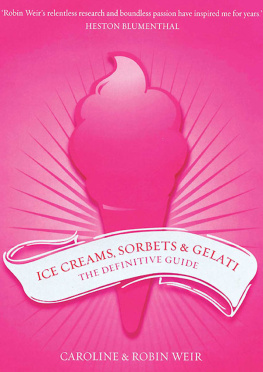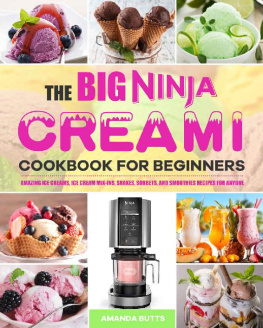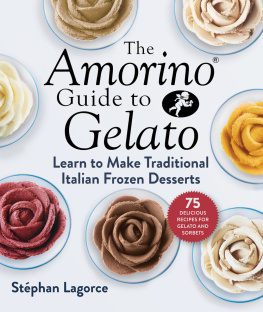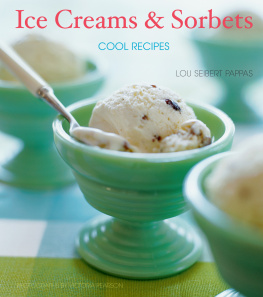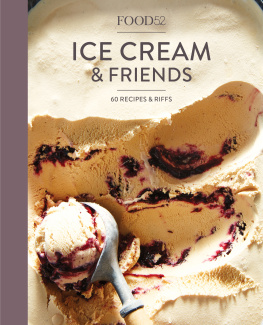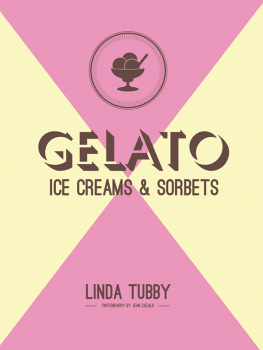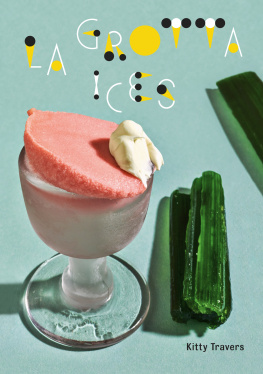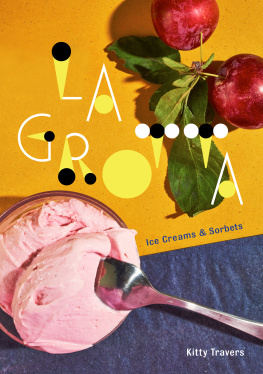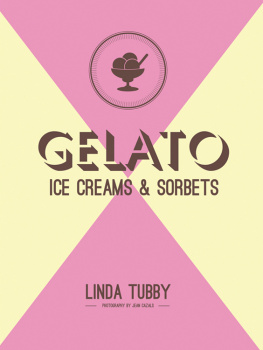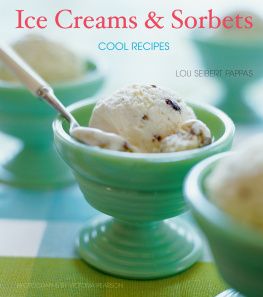This book is dedicated to the memory of
James Howe Weir M.D. and Maule Ramsey Liddell F.R.C.S.
Exceptional Fathers
And also to
Nathaniel, Rebecca, Arabella, Alexander, James, Ethan & Lucy
Exceptional Grandchildren
Published in 2010 by
Grub Street
4 Rainham Close
London
SW11 6SS
Email:
Web: www.grubstreet.co.uk
Reprinted 2012
Text copyright Caroline & RobinWeir 2010
Copyright this edition Grub Street 2010
Jacket design by LizzieBDesign
Book design and formatting by Roy Platten and Sarah Driver
Photography by Michelle Garrett
Styling by Jayne Cross
The rights of Caroline & Robin Weir to be identified as the authors of this work have been asserted by them in accordance with the Copyright, Designs and Patents Act 1988
A CIP record for this book is available from the British Library
ISBN 978-1-904943-46-4
All rights reserved. No part of this book may be reproduced
or transmitted in any form or by any means, electronic or mechanical, including photocopying, recording or any information storage and retrieval system, without permission
in writing from the publisher.
Printed and bound in Slovenia
Authors Note: The use of uncooked eggs does not occur in this book. However for those people who wish to carry on the practice of adding whisked egg whites to lighten the mix, we would suggest they use pasteurised egg whites, powdered or liquid. This is because it can be difficult to guarantee the safety of raw eggs.
Contents
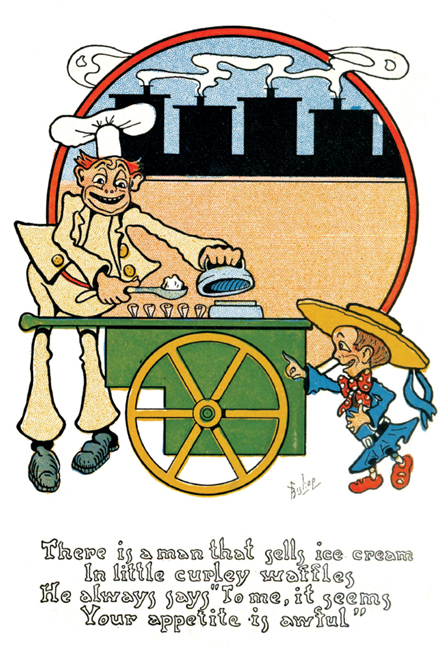
Here, fifteen years after the publication of our first book, is a new, up-dated, expanded version, even more definitive. When told of our intention to do a second edition a friend remarked Are you sure there is any more to say that is worth saying? This had the effect of putting us on our mettle. The final judgement lies with you, the reader, but we are sure we have not let you down with this book.
Since the publication of the first book research has gone on apace. We have acquired pictures, prints, general ephemera, artefacts, equipment and travelled; travel always turns up new approaches and ideas and sometimes new items for the vast collection we now own. In fact the dilemma has proved to be not what can we find to put in a new book, but, what we must leave out. The best way to sum up is to say that the history has been supplemented with additional recent research, basic recipes have remained, but completely new sections have been added on gelato and lollipops/suckers and in addition the whole book sprinkled with more than 93 brand new recipes. Keen eyes will detect fresh pictures, photographs and bits of collected prose.
To those people who might object to buying a second book containing some of the material that appeared in the first we can only say that it proved impossible to construct a second book without the framework of the original. The cross referencing alone would have been labyrinthine.
But first, there is another, very serious matter that we have to deal with head-on. This is the problem of the rising level of obesity, particularly amongst children. This subject is always raised in interviews with the media. They have to be contentious to raise their ratings but with this problem they have a strong point. How dare we be so irresponsible as to publish a book on ices? However we think we can defend our ground, and we do it on two counts; content and volume. The large ice cream manufacturers continue to move in the opposite direction from public demand, supplying retailers, shops, cafes and restaurants, with an ever more foolproof product. Individually packaged ices apart, it is now common for fresh scooping ices served straight from the freezer in boxes designed to fit neatly into a refrigerated display where they sit. These even in the highest summer temperatures retain a perfect shape until dispensed, always perfectly malleable, never melting or dripping. This type of ice cream has become so much part of our lives now that we do not question it; it seems utterly normal. But we tell you, it is not. The technology involved in producing this kind of product beggars belief. Manufacturers will not reveal how much is spent on research, but we reckon that 50million per annum is not far short of the mark. The basic ingredients of ice cream (milk, cream, sugar and egg) no longer go into the manufacture of ice cream in their natural form. And they are making money, a great deal of money. Mainly this is due to the fact that ice cream is bought by volume. So to maximise profit the manufacturers pump their ice cream full of air. You buy air, air is cheap, and hence they make a big profit.
Another factor is sugar. This is a cheap ingredient, so more than is necessary is put into ice cream. Now what do we have? A fully overblown, synthetic, over-sweet product that makes it perfectly possible to sit in front of the TV and eat a large, very large tub of the stuff.
What we are offering here is a chance to taste what ice cream really was and should be. And we have been amazed at the reactions of people, from the young through to food specialists who say this is amazing. Why isnt bought ice cream like this? Why doesnt someone market this?
Ice cream is basically a simple product; whole milk, sugar and cornflour make a very acceptable ice cream. You can add creams of various types and eggs, but these are not obligatory. And that is it. With the home-made product there are no additives, emulsifiers or stabilisers. It is simple to make and a fraction of the cost. Most importantly, because it is a denser (heavier) product, it is impossible to eat more than 3 scoops of quality ice cream at one sitting. This would give an average serving of about 350 calories.
We have always taken a keen interest in research into diets and dietary habits. It is fascinating to note that there have been no reports of binge eating of quality products such as premium ice cream or its close partner, real chocolate. Over-consumption appears always to focus on the cheaper (dare one say, junk) end of the market. Quality ices and chocolate using the real ingredients and not cheaper, chemical, nature identical products are simply too satisfying to eat in large quantities.
Tastes change as time moves on, but we still believe firmly in our original approach. Firstly, that a given ice cream recipe should stand alone as a good, individual, well-balanced ice. Secondly, that the ingredients are improved by being in combination. For example; strawberries and cream would seem like an unbeatable combination, and indeed home-made strawberry ice cream is a knockout.
Our third consideration is; would I want to make this recipe again?
Having said that ice cream is basically a simple product, it is important to add that the inherent ratios of the few ingredients are complex and fixed and if you disregard these you will simply render perfectly sound ingredients inedible. Sadly, we have come across a large number of recipes for all sorts of ices that do not work, the chief purveyor of these recipes being the internet.
Bending the rules does not work either. Unfortunately low fat products and sugar substitutes do not make an even passable ice cream. Other ingredients such as rice, oat and wheat milks all sound like wonderful options, but they do not have the fat solids to make what we think is a passable ice cream. (Although one soya milk based ice did manage to squeeze in under the wire.) What do we mean by passable? Well, not any of the following: variously, rock hard or melted, ice crystals in a milk substrate, unpleasantly granular or plain slimy to eat. So although a recipe for a lolly/sucker made with low fat yoghurt, minimal sugar and chopped fresh fruit sounds ideal, trust us, it is bordering on unpleasant to eat.

